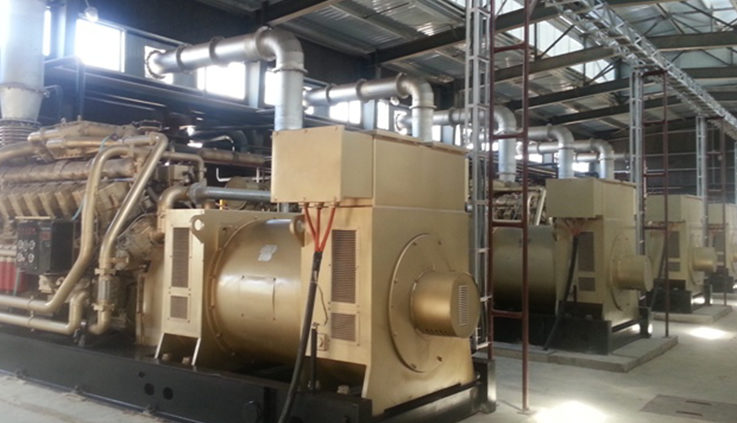Electricity Generation
Introduction
Combustion engines are a well-known technology used in automobiles, trucks, construction equipment, marine propulsion, and backup power applications. Combustion engines employ the expansion of hot gases to push a piston within a cylinder, converting the linear movement of the piston into the rotating movement of a crankshaft to generate power. Reciprocating internal combustion (IC) engines are characterized by the type of combustion: spark-ignited (SI) or compression-ignited (CI), also known as diesel. Through a continuous investment in research and development JINAN gas and diesel engines remain market leaders in the area of power generation. The engines are highly efficient at the conversion of the energy within gas into useful electrical power.
Electricity Generation
The JINAN generator is connected to an electrical generator by a drive coupling to produce electricity, typically as a generator set. The generator is connected to an electrical circuit breaker to connect it to the site electrical system. This circuit breaker is used to synchronise the generator to the mains if it is to operate in parallel to the grid supply. The engine rotates either at 1000 or 1,500 revolutions per minute depending on the generator type and comes out 50Hz or 60Hz to match the frequency of the mains. In a power plant, many SG or diesel ICEs are grouped into blocks called generating sets. For multi-engine power plant, Every JINAN engine is connected to a shaft which is connected to its electric generator. These generating sets provide modular electric generating capacity and come in standardized sizes, ranging from 1 to 20 MW.
Types of Electrical Generators
Electrical generation plants come in two main forms:
Base-load electricity: Base-load generation is useful where there is a stable source of fuel, such as natural, landfill or coal gas to power the generators. JINAN engines are renowned for their reliability in the field and when challenged with difficult fuels. The generation of electricity alone typically takes place where there is no local need for heating and cooling. The power that is produced can either be exported to the local electricity grid (Grid Sync) or alternatively be used in island mode operation to power local facilities.
Benefits of High Efficiency Electrical Power
High efficiency means:

